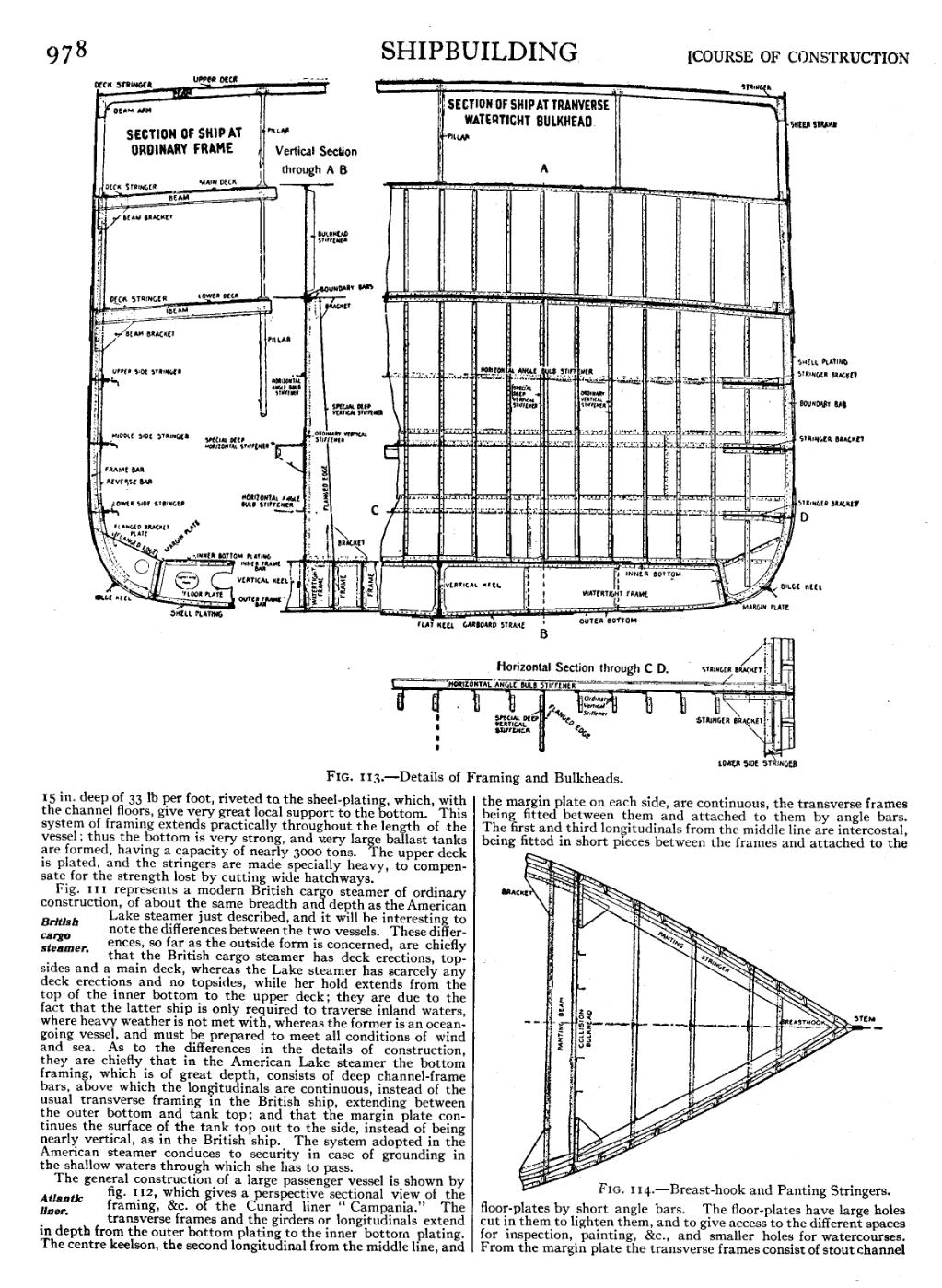15 in. deep of 33 ℔ per foot, riveted to the sheel-plating, which, with the channel floors, give very great local support to the bottom. This system of framing extends practically throughout the length of the vessel; thus the bottom is very strong, and very large ballast tanks are formed, having a capacity of nearly 3000 tons. The upper deck is plated, and the stringers are made specially heavy, to Compensate for the strength lost by cutting wide hatchways.
An image should appear at this position in the text. To use the entire page scan as a placeholder, edit this page and replace "{{missing image}}" with "{{raw image|EB1911 - Volume 24.djvu/1053}}". Otherwise, if you are able to provide the image then please do so. For guidance, see Wikisource:Image guidelines and Help:Adding images. |
- Fig. 113.-Details of Framing and Bulkheads.
Fig. 111 represents a modern British cargo steamer of ordinary construction, of about the same breadth and depth as the American British Lake steamer just described, and it will be interesting to cargo note the differences between the two vessels. These differences, so far as the outside form is concerned, are chiefly that the British cargo steamer has deck erections, topsides and a main deck, whereas the Lake steamer hs scarcely any deck erections and no topsides, while her hold extends from the top of the inner bottom to the upper deck; they are due to the fact that the latter ship is only required to traverse inland waters, where heavy weather is not met with, whereas the former is an ocean-going vessel, and must be prepared to meet all conditions of wind and sea. As to the differences in the details of construction, they are chiefly that in the American Lake steamer the bottom framing, which is of great depth, consists of deep channel-frame bars, above which the longitudinal are continuous, instead of the usual transverse framing in the British ship, extending between the outer bottom and tank top; and that the margin plate continues the surface of the tank top out to the side, instead of being nearly vertical, as in the British ship. The system adopted in the American steamer conduces to security in case of grounding in the shallow waters through which she has to pass.
The general construction of a large passenger vessel is shown by fig. 112, which gives a perspective sectional view of the framing, &c. of the Cunard liner “Campania.” The transverse frames and the girders or longitudinal extend in depth from the outer bottom plating to the inner bottom plating. The centre keelson, the second longitudinal from the middle line, and the margin plate on each side, are continuous, the transverse frames being fitted between them and attached to them by angle bars. The first and third longitudinal from the middle line are intercostal, being fitted in short pieces between the frames and attached to the
Fig. 114.—Breast hook and Panting Stringers.
floor-plates by short angle bars. The floor-plates have large holes cut in them to lighten them, and to give access to the different spaces for inspection, painting, &c., and smaller holes for watercourses. From the margin plate the transverse frames consist of stout channel
